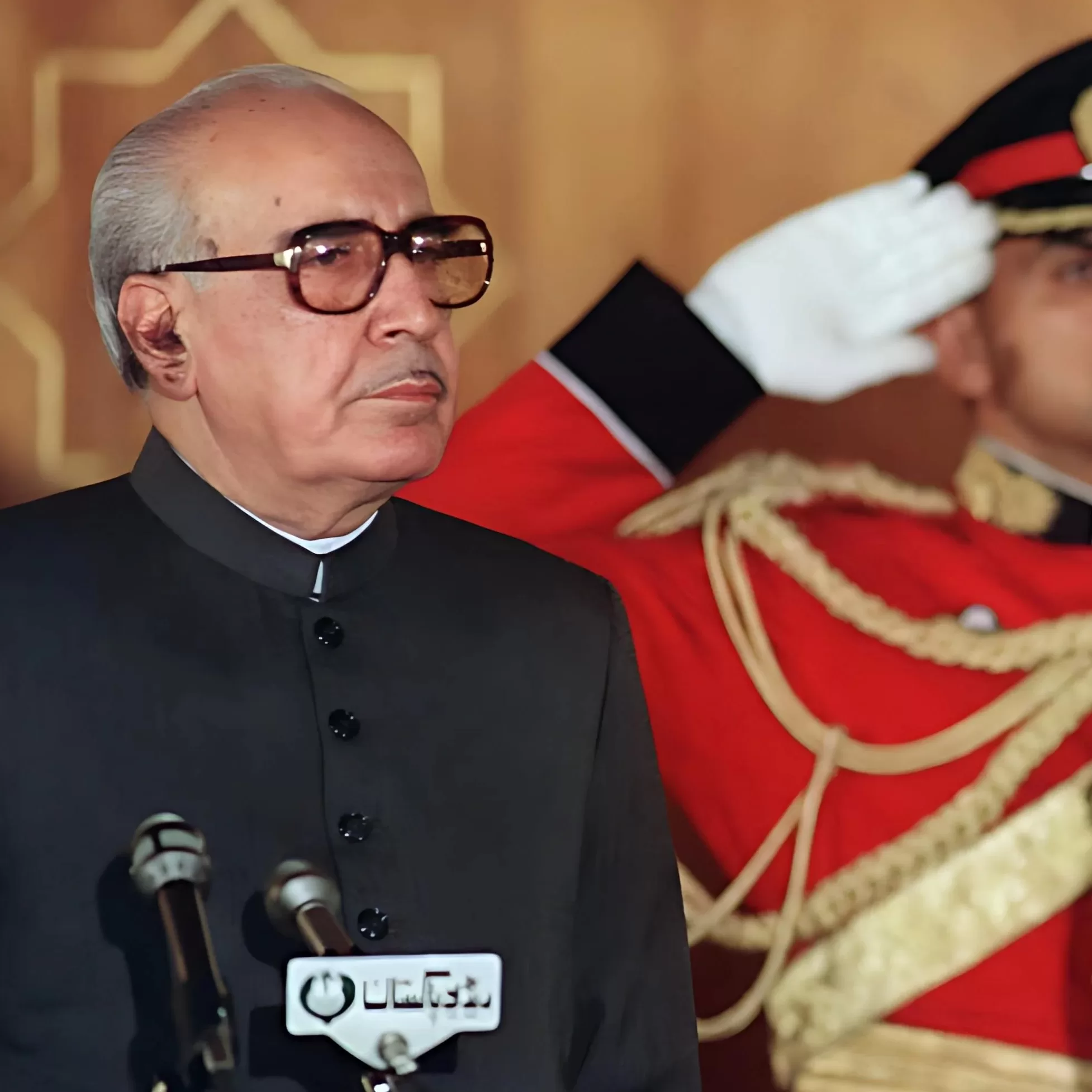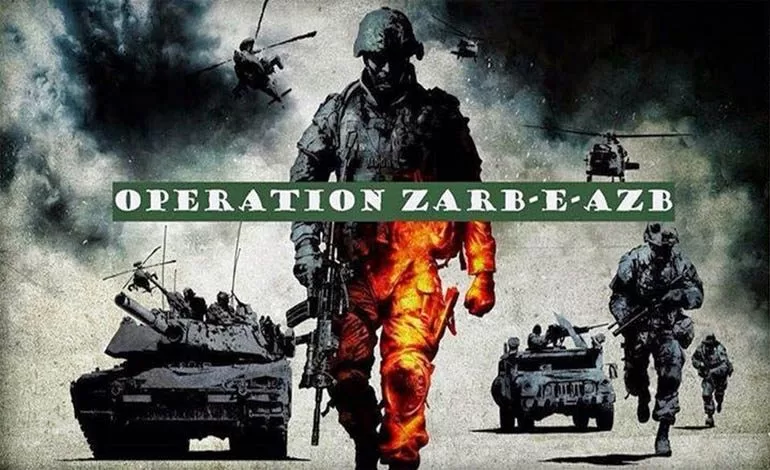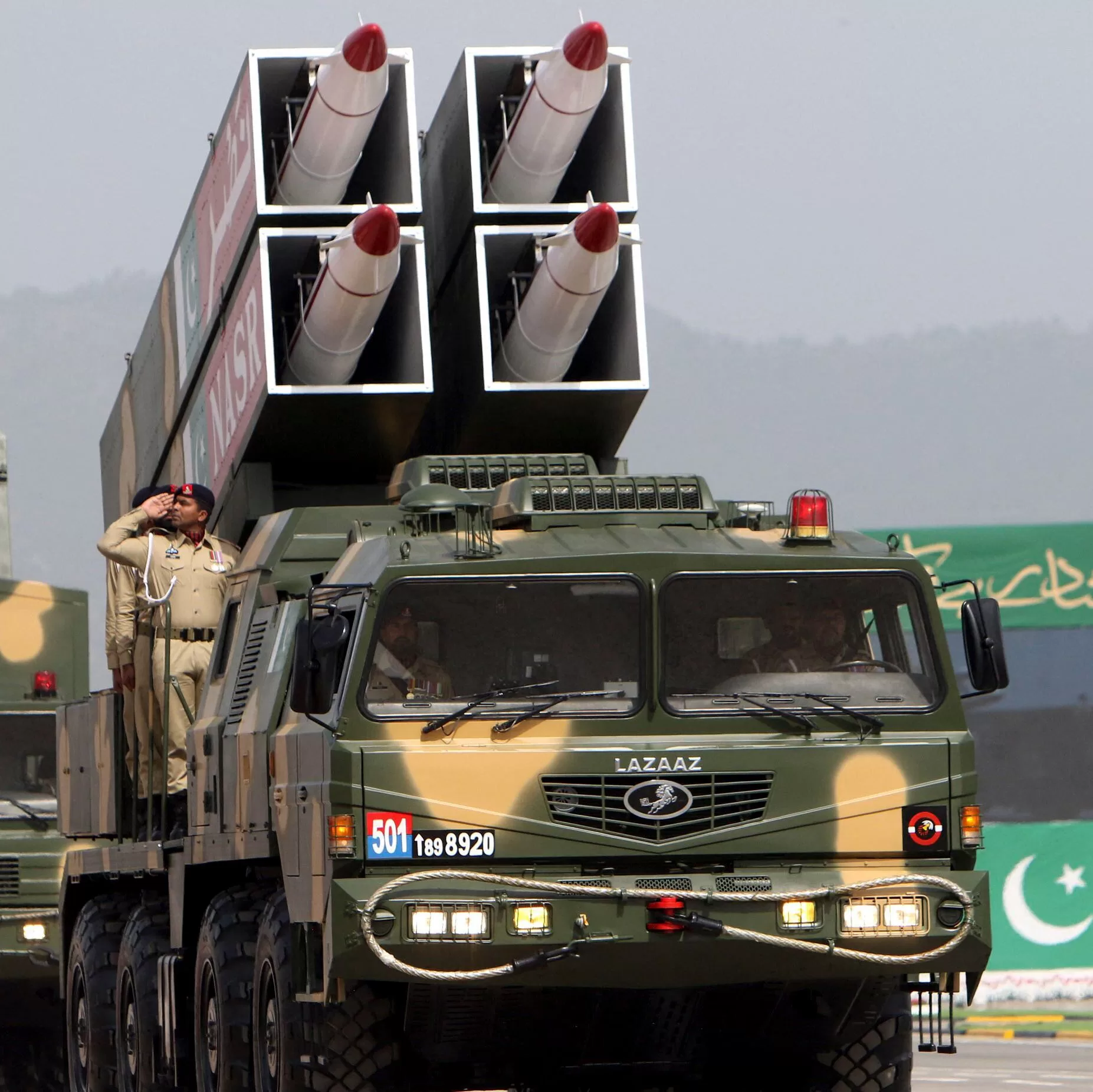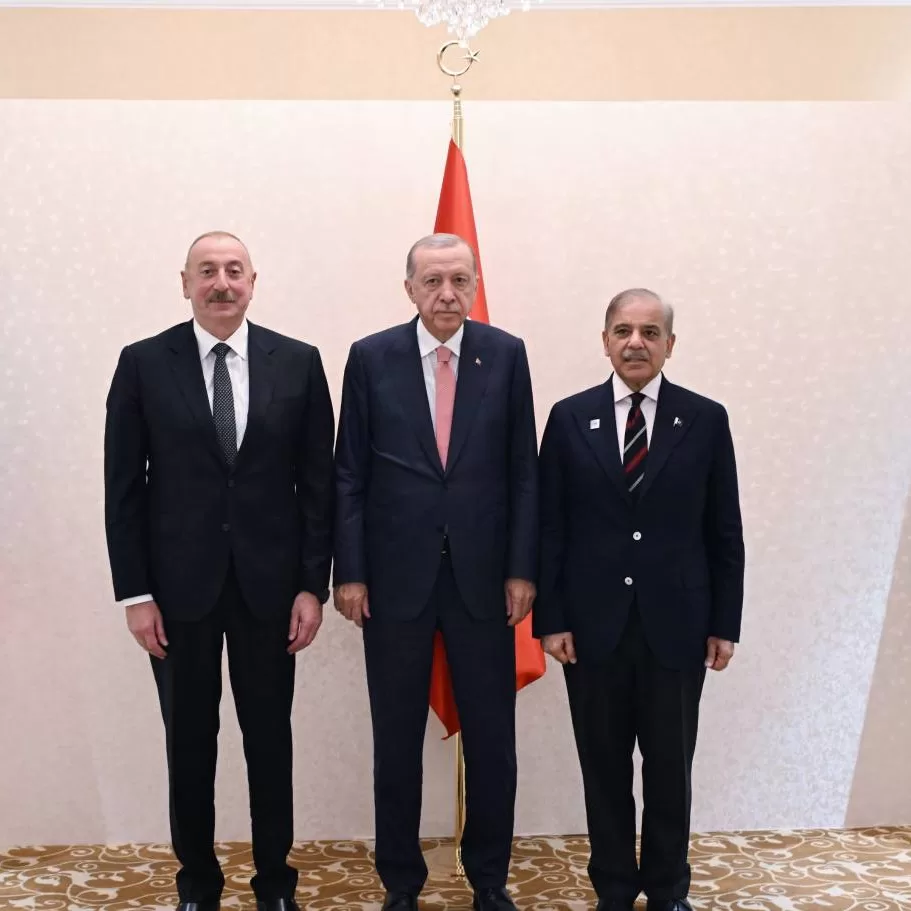In Jan 2005, almost 20 years ago, my first book “Pakistan’s Defence and Nuclear Doctrine” was published, launched by Mohammad Ijaz ul Haq (then Federal Minister for Religious Affairs) and Major General (Retd) Rahat Latif. The compilation during that period was the need of the times in order to boost our morale since the US led war in Afghanistan was in full swing. Many experts who provided me feedback about the doctrine’s validity were convinced that a second volume must be published to cover the latest and recent strategic updates. The original doctrine was basically an introduction regarding Pakistan’s counter balancing efforts against Indian hegemony along with a long history of wars, how India became a nuclear power and as a result, Pakistan was forced to follow suit. The doctrine was mainly India specific, however, the role of Israel, Iran, Afghanistan and China was specially discussed. Work on compilation of the second volume is now in progress and I deemed it necessary to lay out an over-all picture of the previous defence and nuclear doctrine along with some recent updates.
Pakistan’s defence doctrine primarily revolves around the Indian threat, that is very obvious due to India’s size and unholy ambitions towards it next door neighbors. Pakistan does not abide by a no-first-use Doctrine, this has been stated by previous government officials. Though Pakistan does not want a conflict with India if it comes to war, Pakistan would “respond with full might.” These statement mean that if pressed by an overwhelming conventional attack from India, which has superior conventional forces, Pakistan might use its nuclear weapons.
Similar remarks were made by former Pakistani President Ghulam Ishaq Khan in early 1990s, when rumors spread about a possible nuclear conflict between the two nations. While it is evident that Pakistan’s nuclear doctrine is primarily based upon an immediate Indian threat, it should not be limited to the Indian factor only. India being a close neighbor is well aware of consequences resulting in case of any hard conflict with Pakistan and knows very well what might happen to its economy.
Officially, Pakistan has said that any adventure against Pakistan’s nuclear facilities will be considered an attack on Pakistan itself and that Pakistan will be free to respond with its full might. This is the official statement that usually comes from time to time to establish the firm commitment to the world how serious Pakistan is about its nuclear program and its security. The security of Pakistan’s nuclear facilities is the most important and of top priority of all governments, past and recent.

India Specific Doctrine
The first obvious principle of our doctrine is regarding India’s superiority in conventional arms and manpower that would have to be tackled by nuclear weapons. During any future Indo-Pak armed conflict, if India’s numerical superiority in men and conventional arms would likely exert pressure beyond limitations and when a break-through of Pakistan’s defence lines is possible or has already occurred in the main defence line causing major disaster to the defense, which cannot be restored by conventional means, the government would be left with no other option except to use nuclear weapons to stabilize the situation. The political will to use nuclear weapons is essential to prevent a conventional armed conflict, which would later on escalate into a nuclear war.
Pakistan’s defence and nuclear doctrine would therefore essentially revolve around the first-strike option. In other words, Pakistan will use nuclear weapons if attacked by India even if the attack is with conventional weapons. This would entail a stage-by-stage approach in which the nuclear threat is increased at each step to prevent India or any other country from attack. Let’s discuss what those step by step measures might be in case of an upcoming possible conflict.
The first step might be an open warning to the other side about not crossing red lines that will escalate tension. If this open warning does not seem to be working, the next step might be to send a private or secret message mentioning the possible consequences as a result of this conflict. It is not necessary for nuclear nations to start the conflict immediately followed by use of nuclear weapons.
If warning and open dialogue do not seem to be working, the next action to prevent the enemy from attack is to conduct a nuclear explosion on Pakistani soil (as done in May 1998) to show capability and power. It might be hoped that above mentioned steps would be enough to prevent any invasion against Pakistan but it is not a guarantee that the enemy will not start any aggression. The ongoing situation in Kashmir and interior problems in India might force her to think about a possible conflict. It is very important to mention that for Pakistan conventional war is not an option. So, it is evident from statements issued by Pakistani officials on frequent basis that any conventional war will overwhelmingly be converted into an unconventional war.
All options mentioned so far are for preventing the enemy from a possible aggression and the last option in this list is to get ready for conducting a thermonuclear bomb explosion that is many times more destructive than a nuclear bomb. We have seen examples in history how a thermonuclear bomb was tested to show power and destruction that might result in case of its usage. The fury and destruction associated with thermonuclear explosion would definitely help defusing the escalated situation and disrupt enemy plans.
Suppose if all the show of power options seem to fail and the enemy is determined to exercise a limited war this time, the next step would be the use of a few tactical nuclear weapons against Indian or enemy attacking forces. Utmost attempt and planning must be done to use nuclear weapons away from Pakistani soil along with a nuclear attack at enemy military targets on their soil on advancing forces. In this way, there will be minimum damage to the thickly populated cities and civilian lives.
Some weapon systems would be in reserve for the counter-attack and these would be safe from Indian/enemy attack as some would be airborne while the ground-based weapons are mobile and could be moved around the country.
The first strike option should be used very effectively and with highest degree of accuracy. This goal can be achieved with trustable and calibrated delivery systems and Pakistan has a very effective delivery system that is capable of hitting the targets within satisfactory limits.
With the passage of time, a greater degree of advancement will certainly be introduced and developed in Pakistan’s nuclear doctrine of the first-use of nuclear weapons, to provide the government more options in the use of nuclear weapons. This would also avoid unnecessary collateral damage to cities and other population centers in both countries. The objective would be to employ nuclear weapons if attacked but with least civilian casualties and damage to infrastructure. It must be understood that a nuclear device is not just another weapon with increased firepower. It is in fact a weapon of mass destruction and a totally new system that requires new rules of command, control, communications, deployment and engagement. It is obvious that the control of this devastating weapon must rest firmly in the hands of the highest political authority in the country, the Prime Minister. It is important that the Prime Minister’s decision would be based on an earlier discussion in the Federal Cabinet, about the dangerous situation of a possible conflict. The situation would also have been discussed in the Defence Committee of the Cabinet which is responsible for defense and security of the country and in the national security committee.
India has shown a greater degree of reliance on promoting its Cold Start Doctrine which is mainly developed against Pakistan in case of a possible war. This doctrine is intended to allow India’s conventional forces perform holding attacks in order to prevent a nuclear retaliation from Pakistan in case of a conflict and it involves the various branches of India’s military (Army, Navy and Air force) conducting offensive operations as part of unified battle groups.
Elaborating bit more, the greater objective of this Cold Start Doctrine is to establish the capacity to launch a retaliatory conventional strike against Pakistan that would inflict significant harm on the Pakistan Army before the international community could intervene, and at the same time, pursue narrow enough aims to deny Islamabad a justification to escalate the clash to the nuclear level. This doctrine heavily depends upon quick and speedy mobilization within 48 hours along with enormous firepower.
Responding to the Indian Cold Start strategy, Pakistan has developed tactical nuclear weapons (smaller in size) that can be fired through short range missiles and even with other delivery equipments. This tactical capability is in addition to the air borne nuclear capability employed by Pakistan air force for such scenario.
The Pakistan military tested “the Nasr, a nuclear-capable missile” from the family of Hatf-IX missiles with a purported range of 60 km, high accuracy and a shoot-and-scoot delivery system. In this way, Indian plans to conduct a surprise and fast mobilized attack in a limited war scenario has been well tackled by the Pakistan army. But Pakistan must keep a close eye on Cold Start since it is still in the development and modification phases and a corresponding matching response should be considered if any sort of advancement is clearly seen for re-employing cold start strategy. The one critical factor that Pakistan must be watching is the fourth and fifth generation warfare tactics employed by India against Pakistan with the help from Afghan secret service NDS and some other notorious agencies. The combination of fourth/fifth generation warfare with cold start doctrine is a matter of concern and must be carefully watched.

Probably this is the reason why Indian Minister Subramanian Swami had indicated Indian intentions for a war with Pakistan by April/May 2018. Although Pakistan had taken steps to counter remaining terror elements through operations Rad ul Fasad and Zarb e Azab, but it is equally important to sort out those hidden proxies amongst our society that can facilitate the enemy’s fourth /fifth generation war tactics. These facilitators can be in media, civil society and some members of the political parties.
Pakistan has also demonstrated second strike capability by launching a nuclear capable missile from submarines. This is a clear indication to the enemies that in a worstcase scenario, Pakistan still has the choice and capability for a full scale retaliatory nuclear response. In any nuclear conflict, it is obvious that a first strike option would likely eliminate the adversary completely and the only chance to retaliate is through second strike option.
Moreover, retaliatory response could be further supported by air force since some weapon systems could be air borne during the conflict. So, it is evident that effective coordination amongst Army, Navy and Air Force along with sharing weapons system responsibility would provide more flexibility to engage the adversary in a war situation.
Although the highest political figure, the Prime Minister, will decide to employ the nuclear option, it must be decided when and to whom would be the authority to use nuclear weapons would be delegated in a war situation. Pakistan has established an effective command and control system to deploy nuclear weapons in a war situation and the formation of nuclear strategic forces is a very important step in this regard.
These forces will be responsible to utilize all means to store, deploy and use nuclear weapons in a crisis situation. The time might come in war situation when delegation of authority would be spread to the local commanders in the field under specified circumstances depending on the course and direction in which the battle unfolds. Fast and secure communications is another essential factor in a nuclear environment. Effective communications from the Prime Minister and his security team through the shortest chain of command to the actual launch area of the nuclear weapon must be secured and prevented from any damage at all times.

It is also be kept in mind under nuclear war crisis that all top commanding authorities from Prime Minister and his cabinet to the military leadership will remain underground to maintain the chain of command. But rules must be set if the top leadership is eliminated due to sudden enemy attack so that there would be some existence of leadership to control the war any way. Intelligence gathering would be vital and critical in a nuclear war environment. It would be essential to have accurate, up to date and timely information about our potential enemy’s additional troop, aircraft and ship deployments and their likely intentions. The enemy’s preparations for a nuclear first strike must be known at the earliest stage of the conflict.
For the daily conduct of the war it may be appropriate to have a committee under the highest political figure, important ministers accompanied by Chairman Joint Chiefs of Staff and Secretary of defense. The role of defense secretary and Chairman Joint Chiefs of Staff would be coordinating the activities of the three defense forces. The role of the army’s air defense commands has a critical part to play in a nuclear war scenario. It should be responsible to locate, identify and destroy incoming enemy missiles and launch a retaliatory attack with nuclear weapons. The government must decide at the earliest stages when a military conflict with India demands to employ the nuclear option.
It is very important to discuss a war scenario imposed by either the Indo-Israeli alliance or any other nation. As discussed earlier, an offensive military policy is the prime factor in Pakistan’s defence doctrine so that any future imposed war would be fought at enemy grounds, not at Pakistani mainland.
Suppose a certain situation is developing in the region around Pakistan that might end up as a military conflict such as gathering of enemy forces in neighboring countries, heavy naval presence in the Arabian Sea. Also suppose that the enemy is technologically much more advanced so it would be a do or die situation for Pakistan. What could be done? This is the question that may be in everyone’s mind and must be answered.
If war seems inevitable and cannot be avoided, the best practice would be to start the war at first resort instead of waiting for the enemy to strike, while keeping in mind that flanks should have been activated much before. All important enemy installations in the nearby regions should be destroyed with a sudden and powerful air strike. Noting the above-mentioned technological gap, the first strike option always will be more advantageous for a morale boost and Pakistan’s defence doctrine is very clear in this regard.
Pakistan has an advantage that it is equipped with tactical weapons with a trustable delivery system. The nuclear missile fired from land or from ships will reach their definite targets which is in Pakistan’s favor. Naval superiority of any other nation will be less effective comparatively in the presence of nuclear missiles. A nuclear missile exploded in the sea would create an enormous destruction in the environment that will eliminate any living being. Pakistan missiles range from 300 km to 3500 km that cover pretty much whole India, a considerable part of Central Asia and the Indian Ocean. If fired from ships, the range could be easily stretched to the Mediterranean Sea. Having said this, it is believed that Pakistan has a lot of options that can be used under any superior potential threat imposed either from East or West.
Whatever has been said so far is basically an India-specific doctrine due to clear reason of unresolved issues and hatred developed during centuries of Muslim rule over India. Pakistani officials during the past few decades have been issuing statements about an offensive military strategy rather than a defensive one. Ultimately, it means that future wars will not be allowed to be fought on Pakistani soil or main land.
This is a very important principal decision adopted during the Afghan war when the USSR invaded Afghanistan in 1979 and consequently the USSR invasion was halted right there in Afghanistan. Recently Pakistan has clearly expressed to US and NATO that an Afghan war can’t be fought in Pakistan. This is the extension of the same policy as explained earlier.
Pakistan being a powerful nuclear nation, must exercise show of muscles for getting certain military and diplomatic benefits. The humble and down to earth attitude does not always work well with a nuclear armed nation. In fact, it is considered as weakness or lack of determination or resolve if such powerful country struggles with managing regional and global conflicts. The only thing remaining is effective diplomacy along with determined political and military leadership. This is the area that must be developed quickly to improve the nation’s image.
Pakistan’s National Interest & Organization of Turkic State
The ongoing developments in the global and regional arena require careful attention from our policy makers on how to position Pakistan’s foreign policy and military strategy from a strategic standpoint. These developments include the ongoing Israel-Palestine conflict in the Middle East, the recent Putin-Xi summit, the standoff with Afghanistan Taliban regime, the upcoming SCO summit in Islamabad from 14 Oct to 16 Oct 2024 and the newly elected Iranian leadership.These challenging times are demanding that regional like-minded countries (Türkiye, Pakistan, Azerbaijan, and Organization of Turkic states (OTS) increase cooperation, not only economically but also strategically keeping in mind the regional geopolitics. As we know these countries are already tied together in the ECO bloc. The main objective of ECO was to develop necessary the infrastructure and institutions among the member states to make full use of the available resources in the region and provide sustainable development.
It should be kept in mind that Central Asia (formerly Turkestan) was the region of the ‘Great Game’ between the British and imperial Russia. This British-Russian competition was significant not only because of the hydrocarbon resources but also for the struggle for influence. Elaborating another historical fact of World War II, one of Germany’s central goals was to expand southeast into the Caucasus and Central Asia (Turkestan) to gain control of the vast farmland and natural energy resources. However, having said that about main ECO functions, it needs to be stretched in terms of developing a joint military industrial complex.
Due to Pakistan’s strategic location, it provides the shortest outlet to landlocked Central Asian Republics to the Arabian Sea, Indian Ocean and further to the rest of the world. Pakistan acts as bridge between South and West Asia for resources of Middle East and South Asia. The Karakoram Highway is an ancient Silk Route between Afghanistan, Tajikistan, China and Pakistan and for having access to Gwadar port, this route provides the land link to the Central Asian Republics through Tajikistan.
Pakistani ports which are around 1700 km away from Central Asian Republics are the shortest route for economic links between Pakistan and Central Asian Republics. It can give boost to bilateral trade in raw material and manufactured goods. It is to be said that Pakistan has to build cultural and economic ties with Central Asian Republics which will provide a natural strategic depth to Pakistan against the hegemony of India in South Asia.
Pakistan has to be smart in such circumstances due to challenges from India, terrorism from TTP and BLA using Afghan soil and CPEC-related security matters that need to be accomplished as soon as possible. A few steps that must be taken short and long term by Pakistan in order to be able to handle future challenges, are mentioned below. First and far most, Pakistan must be self-sufficient and self-reliant on defence related matters and must build the military equipment industry as the backbone of the country’s economy.
We can plan/reform in long term for other commercial sectors, but due to challenges and shortness of time, it is imperative to boost the military equipment-related economic plan (SIFC) for bridging the vast foreign exchange gap. A strong and prosperous Pakistan will definitely be able to play a bigger role as time arrives in the near or distant future.

The second milestone is to build a strong regional Muslim-led military bloc that could initially start from Pakistan, Turkey, Azerbaijan, and Organization of Turkic states OTS. Saudi Arabia and Qatar can be added in this bloc if the situation and tension escalate as a result of Israel-Palestinian conflict. Keeping in mind the stretch of this bloc, as per my view, the area of influence or domination of Pakistan’s interest must be from Arabian Sea, Persian Gulf, Red Sea, Gulf of Aqaba, Mediterranean Sea, and the Black Sea. Some additional details are mentioned below. The third milestone is leveraging SCO and BRICS membership & CPEC–Powerful Tools for Foreign policy maneuvering.
Pakistan’s foreign policy is always influenced by western-oriented thinking with strong interaction with NATO. Many historical examples can be given like the Soviet intervention in Afghanistan, but the happenings after 9/11 and consequent events compelled Pakistan to rethink its global engagement as far as dealing with big powers is concerned. The opportunity came through the Gwadar Port and CPEC that opened the doors for another power axis, China and Russia.
Moreover, Pakistan became a full SCO member and recently gives clear indication to the western bloc that Islamabad is responding to the strategic paradigm shift due to consequence of war on terror and unilateral expansionism. This club has been the potential center for regional geopolitics as well as economic wellbeing under OBOR. Pakistan has the key status due to flag ship CPEC project. This bloc has huge potential to extend the scope of CPEC to Central Asian states, the Caucasus and deep into Russia. If Iran is added, it could involve the Caspian potential as well. The challenge is to benefit from such a power bloc into our economic wellbeing and geo-strategic gains for example like the Kashmir issue.
The challenge here is how to maintain fair relations with NATO countries specially the United States. This enormous challenge requires an aggressive foreign policy and a very well-motivated foreign office staff.
The successful calibre in foreign policy terms is to keep relations with both blocs but having a predominant tilt towards the region. NATO and western countries have less economic stake in Pakistan rather than expansionism while on the other hand, China is there with a full economic agenda.
Pakistan must seek full membership of BRICS to respond further to regional and global paradigm shift. The best practice will be to use the pros and cons of both rival blocs and use them in the interests of Pakistan. Also keep in mind that fair practices and stand on principles will be the ultimate strength in the diplomacy world.

Pakistan – Turkey – Azerbaijan Strategic Alignment
Pakistan must leverage Turkey and its influence as a vital and fundamental tool of its foreign policy. Turkish – Pakistan and Azerbaijan military and naval alliance and strategic partnership along with Organization of Turkic states (OTS) countries can be a rock-solid element in multiple domains keeping in mind middle east and central Asian geo-politics. Pakistan and OTS alliance is necessary and an important dimension in Pakistan’s defence doctrine. I am totally convinced that Turkey is one of the friendly countries that will come to support Pakistan in times of need. Pakistan has many tools and maneuvers at its disposal and alignment with Turkey should be another strategic maneuver that will be beneficial not only for both countries but also for regional stability. Turkey has influence on many countries and Pakistan can leverage such influence with close strategic and diplomatic alignment. The joint Pakistan-Turkish partnership will serve as a strong strategic power balancer for the Middle East and IOR. Elaborating further, Turkey has plans to promote its influence keeping in mind the historical Ottoman Empire, so Pakistan must help Turkey in this domain. The strategic goals of Turkey will always merge with Pakistan’s interest one way or another. The joint development of military hardware, research and development and economic investment on each other’s side will help boost the relations and partnership between these two brotherly countries. The diplomatic stance of Turkey on Kashmir has always been in favor of Pakistan. Pakistan needs to boost aggressive economic advances in order to fully gain from SCO membership at all levels including bridging between SCO and Turkey. Due to the SCO status, Russia is not an Indian ally anymore in the sense that we used to observe in the past. The economic revival and boosting trade with Turkey through Iran can be one great step in this regard since we already have RCD agreement between Pakistan, Iran and Turkey. This can become another corridor (Turkey, Iran, Pakistan Economic Corridor – TIPEC) and can be linked with CPEC. In this way, Eurasian opportunities will be merged with benefits for CPEC-related trade. But this all depends heavily on Iran that how its government wants to run Iranian foreign policy. Pakistan is a nuclear power, so we must be prepared to display our muscles wherever and whenever required. Many countries have defence or semi-defence pacts with Pakistan, so we can leverage these opportunities for boosting many sectors for betterment. For example, Pakistan is taking an active part in the 34-nations Saudi-led military alliance. This platform can be used for selling military equipment, bilateral relations for trade, visa on arrival agreements, military training and other economic deals. Pakistan must work aggressively for getting military access to IOR and North Arabian Sea Islands from Yemen, Somalia, Maldives, Oman, Sri Lanka, and Brunei. If Turkey, Azerbaijan and Pakistan along with OTS countries join hands for development of such a strong bloc, many Muslim countries will follow and that will be the beginning of the fault lines that should exist in case any escalation takes place in the Middle East or in our dominion of influence.




